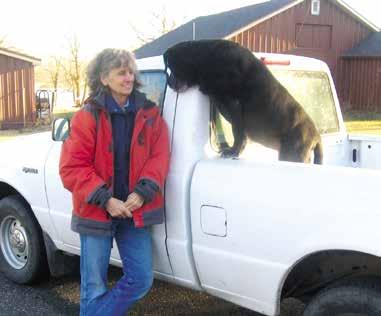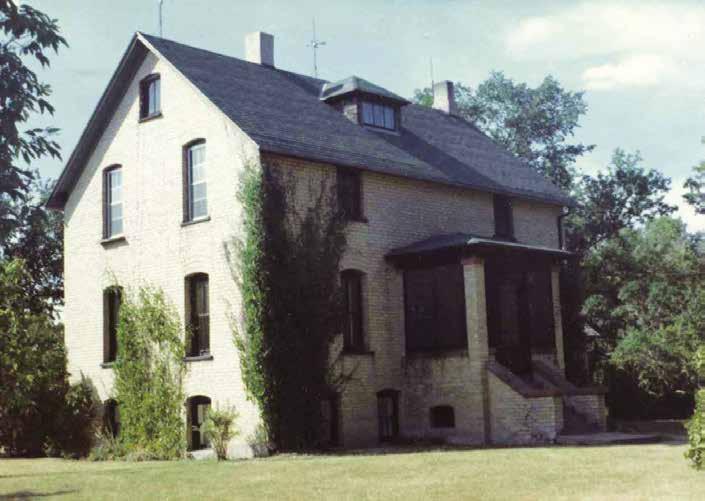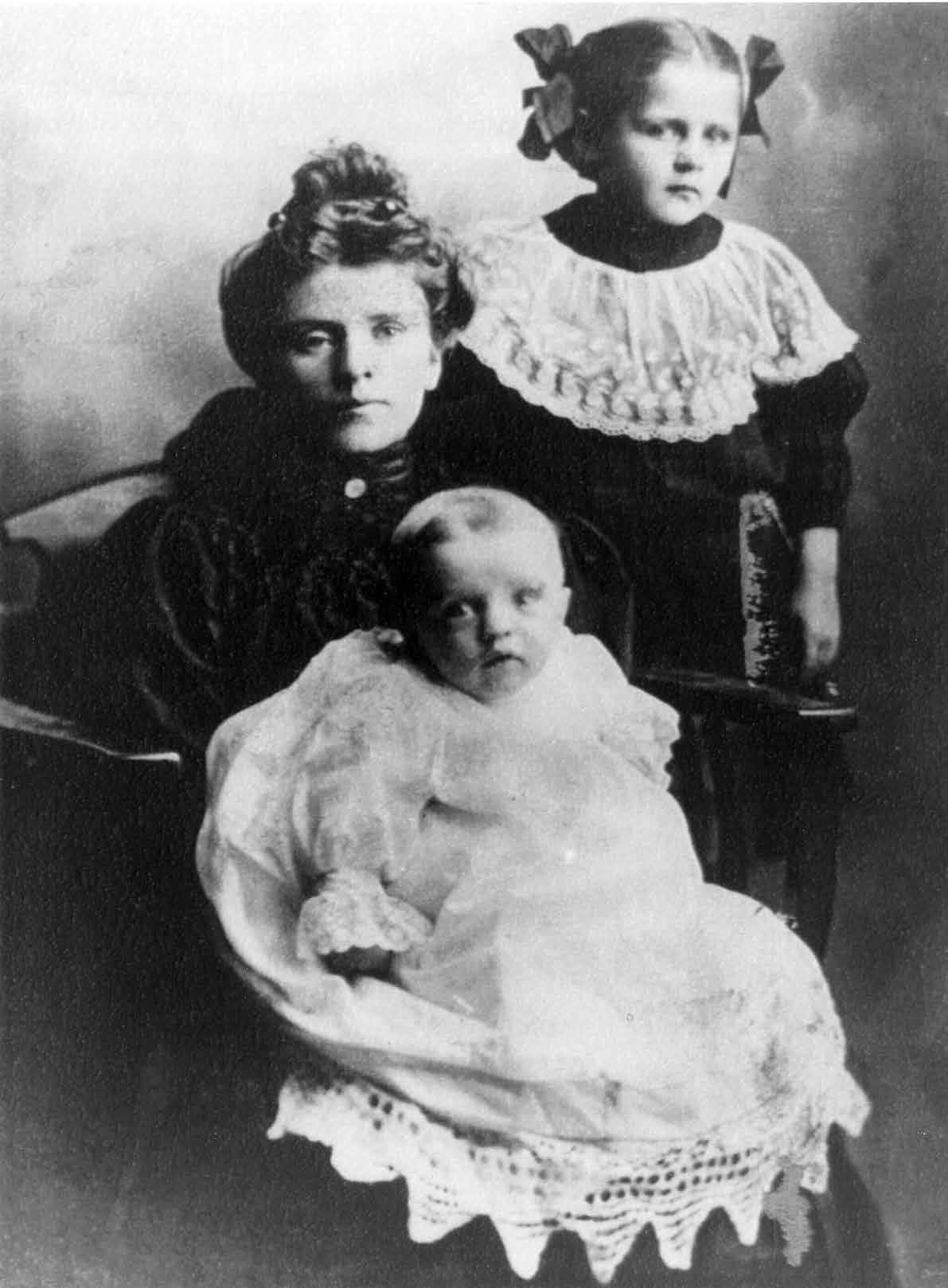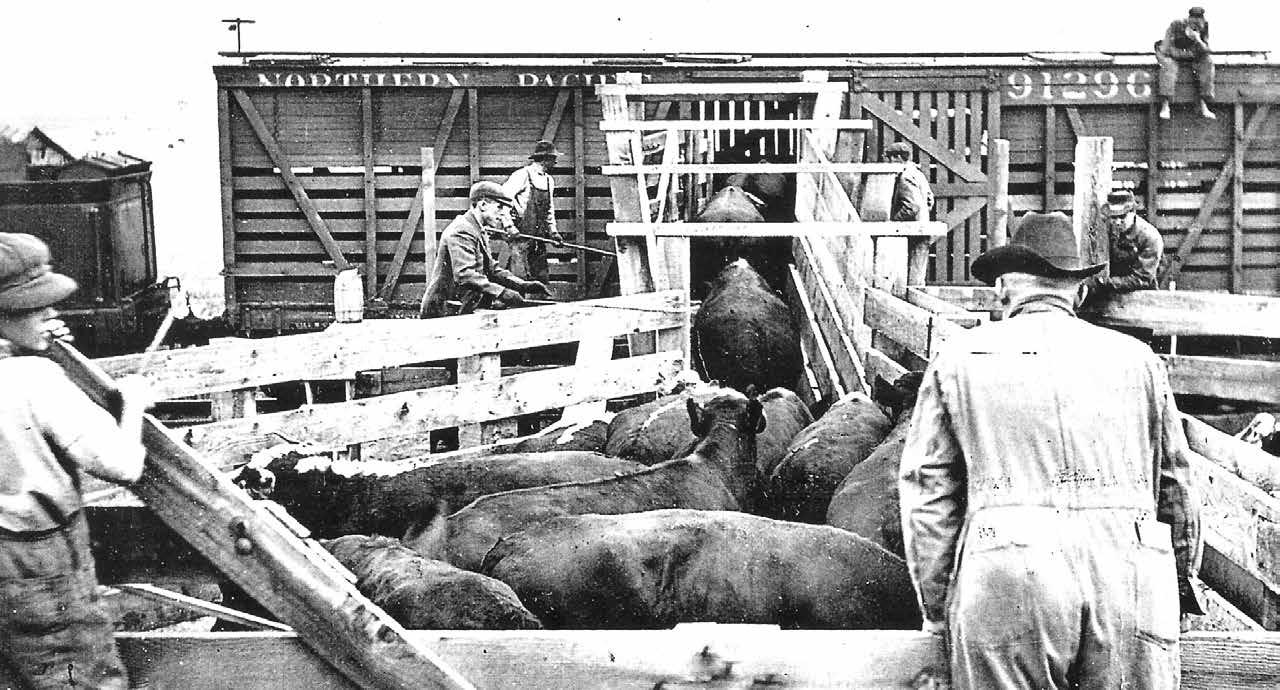
5 minute read
My Good Dog Bailey
By Susan Krohn
It is 9:30 in the morning and my dog is staring at me, wagging her tail and panting. “It’s time to go!” she insists. There are no acceptable excuses. We go.
Advertisement
The thermometer says twenty degrees outside, and the hoarfrost is thick on the tree limbs as she and I make our daily cross-country ski trip through the forest in the hills of the Turtle Mountains where we live. Snow is bowing the branches of the conifers while the birch trees stand white and naked, sending their shoots out from the central trunk. Poplar trees tower above us, breaking off high up the trunk to fall into the nearby branches and hang above our heads until they complete their drop to the ground some windy day in the future.
Snowmobiles have packed the trail to a four-foot width but this morning there is no one here but us. I can feel the early March sun getting stronger on my face as the days lengthen. The temperature today felt so cold in October but now sweatshirts are in order, at least briefly. The snow that fell in November is the snow I still see, blown about with fresh flakes on top. Not much melts in northern North Dakota from December to March.
I stop my skis, hold my breath, and hear no sound at all. When I first moved here the lack of background noise was upsetting, the intense quiet weighing on me. Now I am used to it and visiting anywhere else is unsettling.
My dog Bailey is a black lab/boxer mix who has taken me on these outings since the beginning thirteen years ago. She crawled into my lap as I sat on a friend’s living room floor, one of eight puppies. I have heard since that the dog that picks the owner is the best dog of all. I had prepared a box for her to ride inside on the drive home, but she howled and cried so pitifully that she was back in my lap before we got down the driveway.
It took a couple of weeks for Bailey to climb up the steps to my bedroom from her blankets under the stairs, but once she’d made it up, I had to keep the door shut to keep her out of my own bed. She has always guarded the doorway from the threshold on the other side.
Through the years, Bailey has always stayed close, usually no more than fifty feet away when I am home. She has protected me against everything from moose to skunks as we ski the hills around our house. At eighty-seven pounds and very fast, she has chased coyotes as far as I can see, never catching them, thankfully. One time I saw crows fussing about something in a thicket of brush and trees. When the wolf emerged about two hundred feet ahead, it stopped and stared at us. I said, “Oh, Bailey, what do we do now?” Looking back for her response, I saw she was halfway across the hayfield, headed for home. The wolf and I looked at each other and went opposite directions.
As she and I were moving from Colorado to North Dakota, it was late at night and pouring rain when I pulled into a rest area in Buffalo, South Dakota. Somehow, we both curled up on the front seat of my Mazda pickup and slept until morning, keeping each other warm.
Today we see tiny squirrel tracks crossing the trail and, of course, evidence of the deer and moose who use it to travel their territory. The chickadees are singing their mating songs. We come upon an animal killing, nothing but fur scattered over the snow and many coyote prints telling the story of the last few minutes of life for the deer. Bailey is intrigued and I am relieved that it was nature in action rather than poachers, as has happened twice recently. I ski ahead as Bailey investigates the site and finds what is left of the hide, trying to drag it along on our outing. I return and explain that she can leave it; we’ll come back, and she can retrieve it then. Eventually she is convinced and we move on to our neighbor’s pole barn, where butchering has been going on. Bailey usually finds some sort of treat thrown out there for her.
We circle our property, the dog checking for anything new since yesterday. We take turns leading each other on our private ski path to access the snowmobile trail. I compact the snow to a trail about eight inches wide, a narrow trough with knee-high powder on each side. If Bailey missteps from this packed track, her leg sinks a foot into the softness on either side, which happens regularly now that she is old. She gets ice crystals between her toes that freeze in place until they melt. I can see that our walking is difficult for her, but there is no way she will stay behind.

All photos are courtesy of the author.
Once, we used to go out in any weather, but now we stay close to home in sub-zero or windy conditions. We usually go skiing for about forty-five minutes, and then I bring her home to sleep by the wood-stove while I go out again alone. Her brown eyes seem to say that she knows she can’t go anymore today, and she too is sad. She can no longer jump into the back of the pickup and sits at the top of our long sloped driveway instead of walking with me. But she watches attentively to make sure I don’t get lost when I collect the mail or newspaper. She no longer hears vehicles that drive into our yard nor is she quick to move out of the way for them. She sleeps twenty hours a day. Her legs slide out from under her on linoleum at home so I have put down throw rug “islands” in the kitchen and hallways to give her traction.
As I am writing, she is napping on my feet, gently snoring and uttering occasional whimpers and yips as she dreams of younger days, her feet pedaling the air as though she is chasing squirrels from the porch. I suspect Bailey’s ashes will soon find a place next to those of my first dog, which I brought with me in the move from Colorado, too precious to bury. Bailey has been a good dog, and I will miss her.
SUE KROHN retired twelve years ago from being a rural mail carrier in Longmont, Colorado, to move to Bottineau, North Dakota, where she spends her days entertaining her dog, cross-country skiing, quilting, gardening, and writing. This story is the result of a writing workshop with Debra Marquart.










